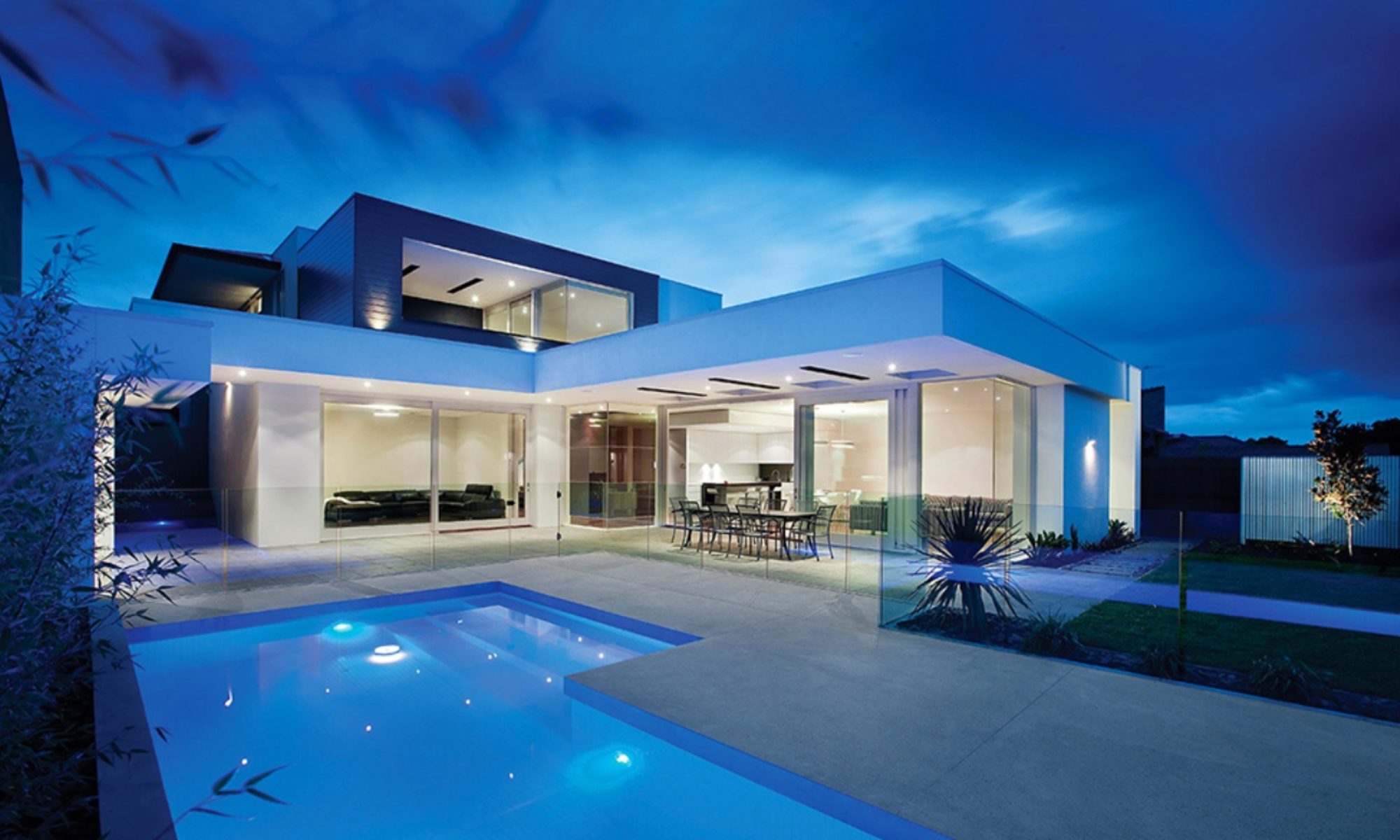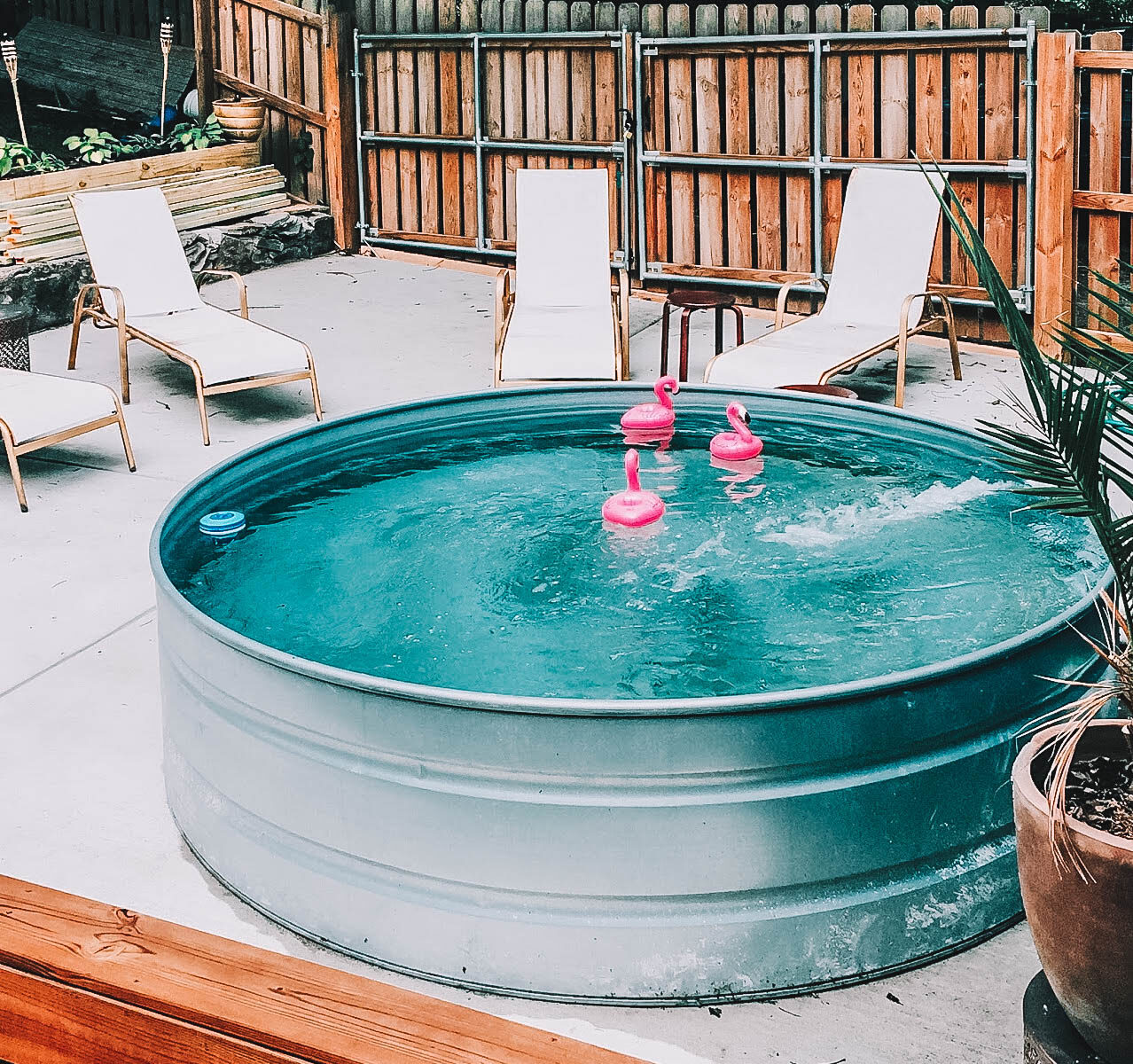We’ve all been stuck at home, it’s starting to get hot, and school—at least in its current form—is almost out. That probably means one thing: You’re starting to think about what summer fun might look like this year.
For many of us, summer means pools time. But if you live in an area where you depend on being able to use a community pool or recreation center, that might be questionable at this time. And building a pool is so expensive and time-consuming.
That’s why we’re loving stock tank pools right now.
What is a stock tank pool?
“Here’s an idea: Instead of dropping a ton of cash just to stay cool for a few hours at a time this summer, you may want to consider the humble, yet far more affordable, galvanized stock tank swimming pool (also known as a ‘water trough pool’),”said Country Living. “These inexpensive farm staples were originally designed as water troughs for livestock, it’s true. But that’s part of their country-chic appeal. Nowadays, stock tank swimming pools have been popping up in backyards across the country.”
Whatever stigma still remains around traditional above-ground pools, stock tank pools have managed to sidestep it by embracing their farmhouse cache. It’s not lost on us that you can order your stock tank from a tractor supply—if you can even find one.
Here’s how to make a splash with a stock tank pool in your own backyard.
Pick your size
You can find common galvanized stock tanks with a round, 10-foot diameter size, but they’re hard to come by. More common are eight-foot versions, but, as their popularity grows, they’re also challenging to secure.
There are also six-foot tanks and oval options, but they don’t necessarily provide the same kind of swimming experience.
Pick your spot
Where you’re going to put your stock tank pool is just as important as the pool itself. Without a level foundation, you’ll have leaks.
“Job one is obviously selecting the site for your stock tank pool. You’ll need to prepare the area by creating a solid, level base,” said Tractor Supply. “You could use compacted sand, or even crushed granite. But, it’s very important to ensure that it’s a smooth surface, free of any rocks or sharp edges. The same is true whether you plan to use the stock tank for an above-ground pool, or want to dig out enough soil to create an in-ground version. If digging a hole for an in-ground pool, remember to allow enough space behind the pool to accommodate the pump and hoses.”
Add your accessories
And by accessories, we mean two things: design and function.
First, let’s talk about function. A stock tank pool isn’t as easy to set up as a kiddie pool. You could just fill it with water and call it a day, but you’ll end up swimming in gunk. And standing water can also attract mosquitos, which is probably not one of your goals.
Take a cue from the Hey Wanderer blog, which can walk you through the pump and the chlorine and all the supplies you’ll need and steps you’ll want to take to get the pool up and running.
Now that you’ve got your stock tank set up, it’s time to make it fancy. While the tank alone has its own distinct vibe, it can be dressed up in any number of ways.
Paint the metal, build deck seating around it, hang lights and incorporate tikis to create a tropical getaway feel—the sky’s the limit. We love this rattan surround, which gives you bench seating and a shelf to hold your drinks! We’re into the whole setup here with the umbrella, and lights mounted on the fence. When we get our pool, we’re definitely stealing this bamboo idea. Encased in stone with multiple fountains shooting across? Yes, please!







